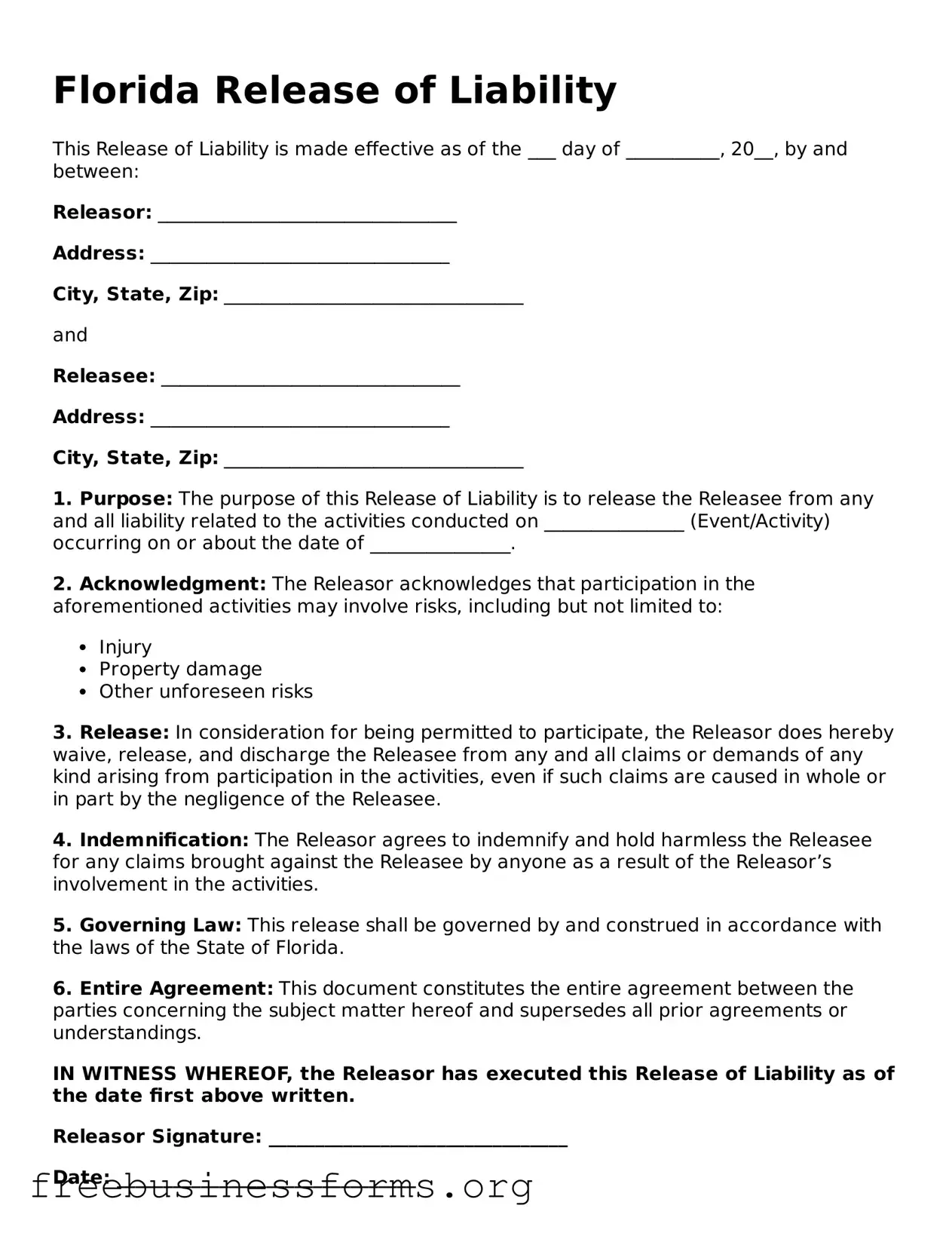Florida Release of Liability
This Release of Liability is made effective as of the ___ day of __________, 20__, by and between:
Releasor: ________________________________
Address: ________________________________
City, State, Zip: ________________________________
and
Releasee: ________________________________
Address: ________________________________
City, State, Zip: ________________________________
1. Purpose: The purpose of this Release of Liability is to release the Releasee from any and all liability related to the activities conducted on _______________ (Event/Activity) occurring on or about the date of _______________.
2. Acknowledgment: The Releasor acknowledges that participation in the aforementioned activities may involve risks, including but not limited to:
- Injury
- Property damage
- Other unforeseen risks
3. Release: In consideration for being permitted to participate, the Releasor does hereby waive, release, and discharge the Releasee from any and all claims or demands of any kind arising from participation in the activities, even if such claims are caused in whole or in part by the negligence of the Releasee.
4. Indemnification: The Releasor agrees to indemnify and hold harmless the Releasee for any claims brought against the Releasee by anyone as a result of the Releasor’s involvement in the activities.
5. Governing Law: This release shall be governed by and construed in accordance with the laws of the State of Florida.
6. Entire Agreement: This document constitutes the entire agreement between the parties concerning the subject matter hereof and supersedes all prior agreements or understandings.
IN WITNESS WHEREOF, the Releasor has executed this Release of Liability as of the date first above written.
Releasor Signature: ________________________________
Date: ________________________________
Releasee Signature: ________________________________
Date: ________________________________
